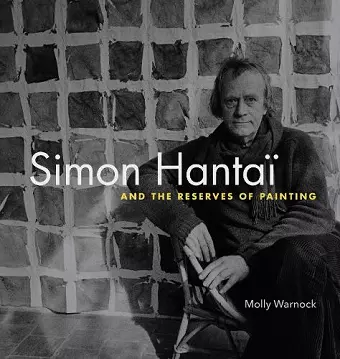Simon Hantaï and the Reserves of Painting
Format:Hardback
Publisher:Pennsylvania State University Press
Published:9th Jul '20
Currently unavailable, and unfortunately no date known when it will be back

The Hungarian-born French painter Simon Hantaï (1922–2008) is best known for abstract, large-format works produced using pliage: the painting of a crumpled, gathered, or systematically pleated canvas that the artist then unfolds and stretches for exhibition. In her study of this profoundly influential artist, Molly Warnock presents a persuasive historical account of his work, his impact on a younger generation of French artists, and the genesis and development of the practice of pliage over time.
Simon Hantaï and the Reserves of Painting covers the entirety of Hantaï’s expansive oeuvre, from his first aborted experiments with folding around 1950 to his post-pliage experiments with digital scanning and printing. Throughout, Warnock analyzes the artist’s relentlessly searching studio practice in light of his no less profound engagement with developments in philosophy, psychoanalysis, and critical theory. Engaging both Hantaï’s art and writing to support her argument and paying particular attention to his sustained interrogation of religious painting in the West, Warnock shows how Hantaï’s work evinces a complicated mixture of intentionality and contingency. Appendixes provide English translations of two major texts by the artist, “A Plantaneous Demolition” and “Notes, Deliberately Confounding, Accelerating, and the Like for a ‘Reactionary,’ Nonreducible Avant-Garde.”
Original and insightful, this important new book is a central reference for the life, art, and theories of one of the most significant and exciting artists of the twentieth century. It will appeal to art historians and students of modernism, especially those interested in the history of abstraction, materiality and Surrealism, theories of community, and automatism and making.
“Warnock’s achievement in bringing together Hantaï’s modernist ambition with his extremely conservative use for religion is enormous. She is thorough but never boring and never even for a moment suggests that there’s anything odd about the premises with which he works.”
—Jeremy Gilbert-Rolfe Critical Inquiry
“Molly Warnock, a skilled academic art historian, offers an elaborate reconstruction and explication of Hantaï’s aesthetic.”
—David Carrier caa.reviews
“Through sustained analysis of both Hantaï’s canvases and writings, [Warnock] provides the most extensive reading of the artist to date.”
—Matthew Bowman nonsite.org
“Warnock makes forays into the intellectual world of Hantaï’s postwar Paris and then uses her findings to guide us across and into the complex surfaces of the paintings themselves, many of which are buried in vaults and seen far too rarely. The focus is tight, which is arguably appropriate for the first scholarly monograph on the artist in English, and her command of the material is impressive.”
—Harry Cooper nonsite.org
“Warnock’s monograph makes a signature contribution to the study of Hantaï’s body of work and to the wider history of modernism. She explicates the fundamental theoretical and practical concerns of an understudied artist whose work, while important, is not well known to a broad audience. Without a doubt, her scholarship provides the most sophisticated art-historical analysis of Hantaï’s thought and practice to date.”
—Michael Schreyach, author of Pollock’s Modernism
“With this book we finally have a beautifully written, deeply researched, and comprehensive account of one of postwar Europe's most significant artists. Far from the cliché of Simon Hantaï and his folded (‘pliage’) paintings as detached and impersonal, Molly Warnock reveals the artist’s full investment in a ‘deep context’ of ideas, historical issues, and major artistic movements: from surrealism to minimalism via abstract expressionism, traversing the terrain of the Catholic liturgy, philosophies of community and phenomenology, and questions of writing and legibility, while never forgetting the techniques and fundamentals of the practice of painting.”
—Natalie Adamson, coeditor of Material Imagination: Art in Europe, 1946–72
“A beautiful monograph . . . focused, exquisitely written and illustrated in colour, with lots of careful meditations on the artworks themselves.”
—Victoria H. F. Scott 21: Inquiries into Art, History, and the Visual
ISBN: 9780271085029
Dimensions: 241mm x 229mm x 26mm
Weight: 1429g
280 pages